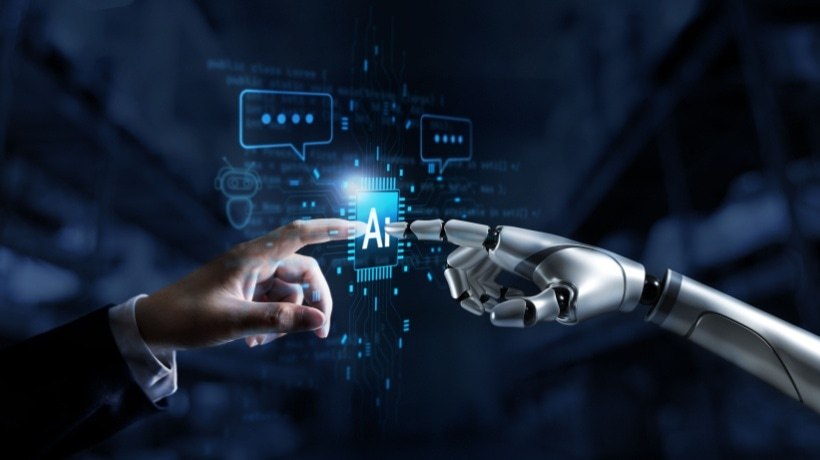
Generative AI Is Transforming Learning: Key Trends To Watch
Generative AI In Learning: Top Trends In 2025
The learning technology landscape is undergoing one of its most significant shifts in decades. As digital transformation accelerates across industries, generative AI in learning is no longer a futuristic concept but a present-day force. For L&D leaders, the rise of AI-powered learning tools marks a pivotal moment to rethink how learning is designed, delivered, and measured. Whether you’re modernizing legacy systems or evaluating next-gen learning platforms, staying ahead of learning technology trends in 2025 requires a clear understanding of both the potential and the practical implications of this shift. This article explores how generative AI is transforming learning strategies and systems, creating opportunities for innovation while also introducing new responsibilities.
Ways Generative AI Is Transforming Learning Technologies
1. Hyper-Personalized Learning Journeys
AI-powered learning tools can now deliver training that adapts in real time to each learner’s role, preferences, and performance. Generative AI for personalized learning enables curated content aligned with individual learning styles and skill needs. This approach increases engagement and knowledge retention, particularly within large or diverse workforces.
2. Faster And Scalable Content Creation
Generative AI can rapidly create high-quality learning content—from scenario-based modules and quizzes to simulations and knowledge checks. This shift reduces dependency on third-party vendors and empowers internal teams to respond swiftly to emerging skills gaps or compliance changes. With AI-enabled tools, organizations can keep training content fresh, relevant, and aligned with evolving business priorities.
3. Real-Time Feedback And Assessment
AI systems can assess learner performance on the spot, adjusting content difficulty or recommending additional resources in real time. These feedback loops enhance the learner experience while giving Instructional Designers actionable insights. As part of the broader 2025 learning tech trends, we’ll see more systems integrating adaptive learning and real-time analytics.
4. Enhanced Accessibility And Inclusion
Generative AI is also improving accessibility in eLearning. Automated transcription, real-time translation, voice control, and alternative content formats make learning more inclusive. These tools help global organizations maintain consistent training across languages, geographies, and roles—supporting workforce development and compliance efforts.
5. Predictive Learning Analytics
With growing amounts of learner data, AI allows L&D teams to move beyond historical metrics to predict future behaviors and needs. From forecasting skills gaps to identifying burnout risks, predictive analytics enables proactive intervention. This elevates L&D’s role from reactive support to strategic enabler.
Challenges L&D Leaders Must Navigate
1. Content Accuracy And Oversight
While generative AI accelerates content production, quality control remains essential. Without human oversight, AI-generated content can be inaccurate, inconsistent, or misaligned with organizational goals. Establishing a strong editorial or instructional review process ensures the integrity of learning materials.
2. Ethical And Bias Concerns
AI models are trained on historical data, which may contain biases. Unchecked, these biases can affect learner recommendations, assessments, or access to resources. L&D teams must work with data scientists and compliance officers to ensure fair, inclusive learning environments and regularly audit their AI systems for bias.
3. Data Privacy And Security
AI-driven platforms gather large volumes of learner data, including behavioral patterns and performance metrics. It’s essential that learning systems comply with global data privacy regulations and have clear transparency around how data is collected, stored, and used. Security and ethics should be built into every stage of deployment.
4. Integration And Technical Complexity
Organizations typically operate with a variety of platforms across HR, performance, and learning functions. Integrating AI-powered learning tools within these ecosystems can be technically complex and resource-intensive. Seamless interoperability should be a key consideration when evaluating AI-enabled learning platforms.
5. Dependence On Automation
While automation brings speed and efficiency, overreliance can hinder critical thinking and reduce human interaction in learning. Learners may become passive consumers rather than active participants. To mitigate this, L&D strategies must preserve human-centric approaches, combining the best of automation with experiential, social, and reflective learning opportunities.
Conclusion: The Path Ahead For L&D With AI
Generative AI is already reshaping the future of Learning and Development—from content creation and hyper-personalization to real-time analytics and inclusive design. The opportunities are significant, but so are the responsibilities.
For L&D leaders, the path forward requires a balanced approach: embracing the speed and scale of AI-powered tools while maintaining quality, fairness, and learner engagement. The most successful strategies will involve thoughtful governance, cross-functional collaboration, and continuous evaluation.
As you explore the top learning technology trends of 2025, prioritize platforms and practices that align with your organization’s values, goals, and workforce needs. The future of L&D will not be defined by technology alone but by how intelligently and ethically that technology is applied.
Source link




